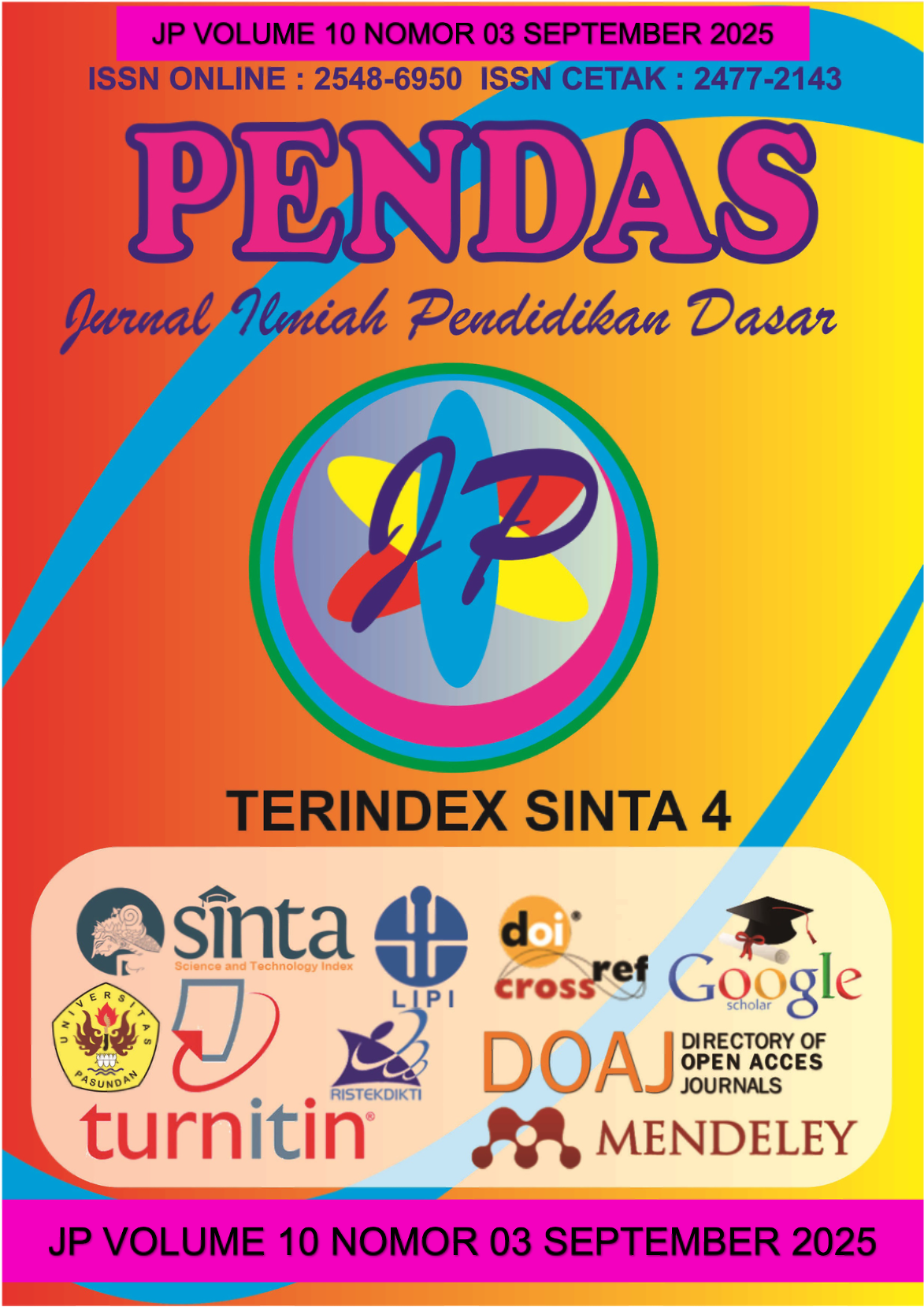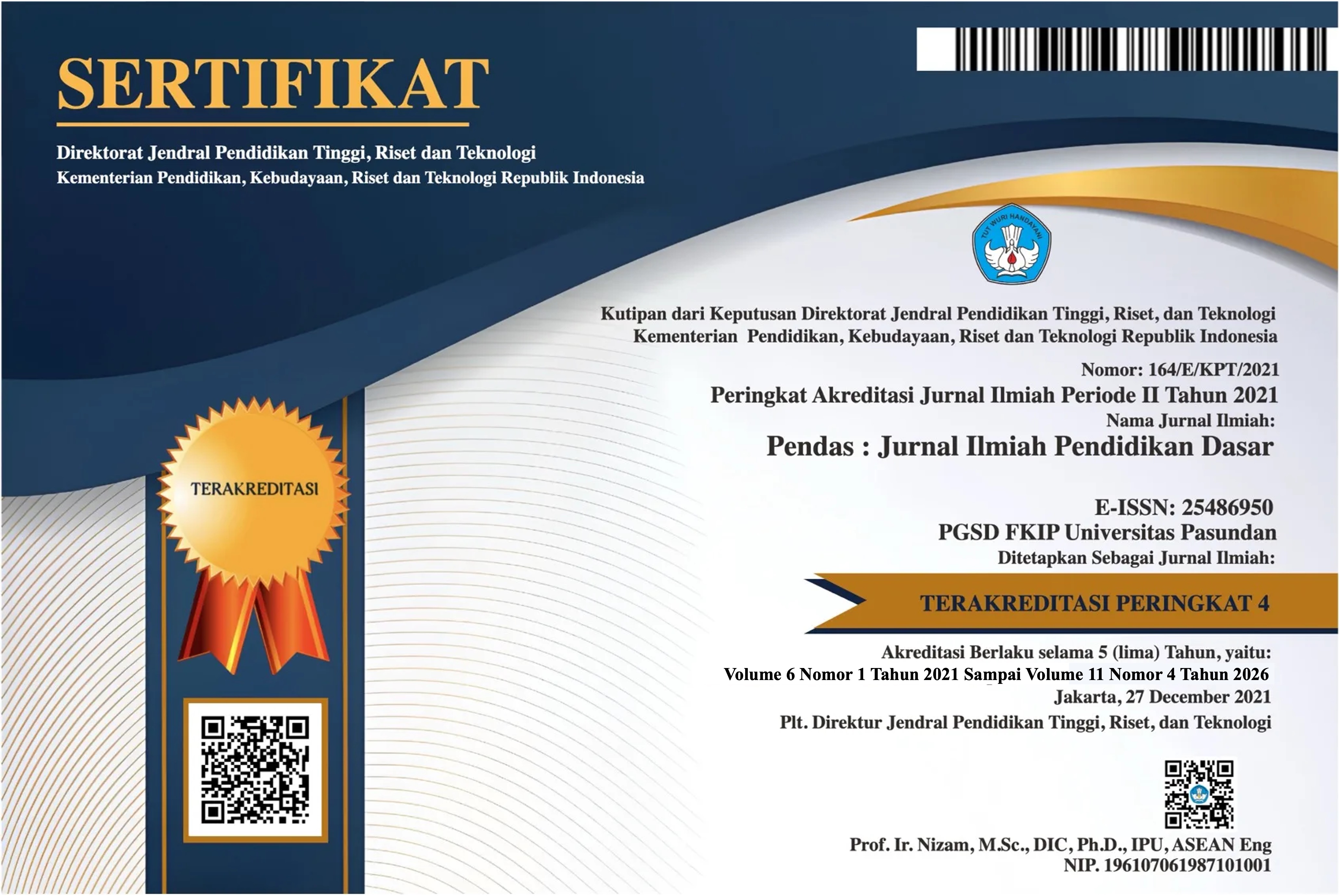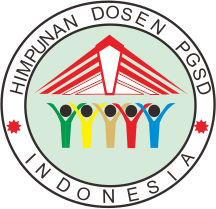IMPLEMENTASI PEMBELAJARAN TERPADU BERBASIS STEM TERHADAP KEMAMPUAN PEMECAHAN MASALAH DAN LITERASI SISWA KELAS IV SD GMIT MANUMUTI TARUS
DOI:
https://doi.org/10.23969/jp.v10i03.30585Keywords:
STEM-based learning, problem-solving skills, literacy, primary school, integrated learningAbstract
This study aims to analyze the impact of integrated learning based on STEM (Science, Technology, Engineering, Mathematics) on the problem-solving skills and literacy of fourth-grade students at SD GMIT Manumuti Tarus. The research used a descriptive qualitative approach. The subjects were one classroom teacher and 20 students. Data collection techniques included observation, interviews, documentation, and tests. The results showed that the implementation of STEM-based integrated learning significantly improved students' abilities to solve contextual problems and enhanced their scientific and mathematical literacy. Students became more active, creative, collaborative, and reflective in addressing real-life problems around them. The STEM approach provided space for students to connect various concepts across disciplines and apply them in daily life. The learning process shifted from teacher-centered to student-centered, enabling learners to engage directly in knowledge construction activities through exploration, designing simple tools, group discussions, and project presentations. This research confirms that integrated learning based on STEM can foster students' critical thinking, problem-solving skills, and literacy development in primary education contexts
Downloads
References
Buku:
Bybee, R. W. (2013). The case for STEM education: Challenges and opportunities. NSTA Press.
Bruner, J. S. (1961). The act of discovery. Harvard Educational Review, 31(1), 21–32.
Johnson, E. B. (2017). Contextual teaching and learning: What it is and why it's here to stay. Corwin Press.
Kemendikbudristek. (2022). Panduan implementasi Kurikulum Merdeka. Jakarta: Kementerian Pendidikan, Kebudayaan, Riset, dan Teknologi.
OECD. (2018). PISA 2018 assessment and analytical framework. OECD Publishing. https://doi.org/10.1787/b25efab8-en
Polya, G. (1945). How to solve it: A new aspect of mathematical method. Princeton University Press.
Trilling, B., & Fadel, C. (2019). 21st century skills: Learning for life in our times. Jossey-Bass.
Jurnal:
Fauzi, A., & Suryadi, D. (2019). STEM education to develop students’ creative thinking skills. Journal of Physics: Conference Series, 1157(2), 022079. https://doi.org/10.1088/1742-6596/1157/2/022079
Indrawati, E. S., Rahayu, S., & Mulyani, S. (2021). STEM-based learning in elementary schools: Improving scientific literacy and problem solving. Jurnal Pendidikan Sains Indonesia, 9(1), 19–30. https://doi.org/10.24815/jpsi.v9i1.18613
Khoiriyah, N., Putri, D., & Wulandari, Y. (2022). Integrasi STEM berbasis lingkungan lokal dalam pembelajaran tematik di sekolah dasar. Jurnal Pendidikan Dasar Nusantara, 8(1), 45–58.
Lestari, D. A., Marzuki, M., & Suryani, N. (2022). STEM-based project learning to improve students' scientific literacy in elementary schools. Jurnal Pendidikan Indonesia, 11(2), 123–134. https://doi.org/10.23887/jpi-undiksha.v11i2.40230
Mbuik, H. B. (2023). Literasi kontekstual sebagai basis pengembangan pembelajaran terpadu di sekolah dasar. Jurnal Inovasi Pendidikan Dasar, 7(1), 12–23. https://doi.org/10.31004/jipd.v7i1.4589
Mbuik, H. B., & Benu, D. (2022). Pembelajaran berbasis masalah untuk meningkatkan keterampilan berpikir kritis di SD daerah 3T. Jurnal Pendidikan Dasar Cakrawala, 8(2), 99–110. https://doi.org/10.31764/cakrawala.v8i2.4850
Mulyadi, R., Putra, S. A., & Salim, A. (2021). Implementasi STEM berbasis potensi lokal untuk meningkatkan problem solving siswa di sekolah pedesaan. Jurnal Inovasi Pendidikan Dasar, 5(2), 70–80.
Nurhadi, D., Suryani, N., & Pratiwi, M. (2023). STEM education in primary schools: Developing integrative thinking across disciplines. International Journal of STEM Education, 10(1), 1–14. https://doi.org/10.1186/s40594-023-00381-0
Putra, P., & Sari, Y. (2020). The effectiveness of STEM learning model in elementary school to improve students’ problem solving ability. International Journal of Instruction, 13(4), 929–944. https://doi.org/10.29333/iji.2020.13457a
Ramadhani, A., Rachmadtullah, R., & Sari, D. (2021). Improving elementary students’ science and math literacy through STEM-based project learning. Jurnal Ilmiah Pendidikan Dasar, 8(1), 30–41.
Saputri, D., Fauziah, Y., & Munastiwi, E. (2021). STEM-based learning for elementary school: An effort to build students' collaboration and problem solving skills. Jurnal Pendidikan: Teori, Penelitian, dan Pengembangan, 6(2), 273–282.
Utami, R. A., Widiastuti, A., & Prasetyo, Z. K. (2022). STEM learning to enhance numeracy and scientific literacy in primary school students. Jurnal Pendidikan MIPA, 23(3), 526–535.
Widodo, S., Herawati, S., & Rochmad. (2020). Developing students' critical thinking through STEM-based learning in primary schools. Jurnal Pendidikan IPA Indonesia, 9(2), 187–195. https://doi.org/10.15294/jpii.v9i2.23377
Saavedra, A. R., & Opfer, V. D. (2012). Learning 21st-century skills requires 21st-century teaching. Phi Delta Kappan, 94(2), 8–13.
Downloads
Published
Issue
Section
License
Copyright (c) 2025 Pendas : Jurnal Ilmiah Pendidikan Dasar

This work is licensed under a Creative Commons Attribution 4.0 International License.



















